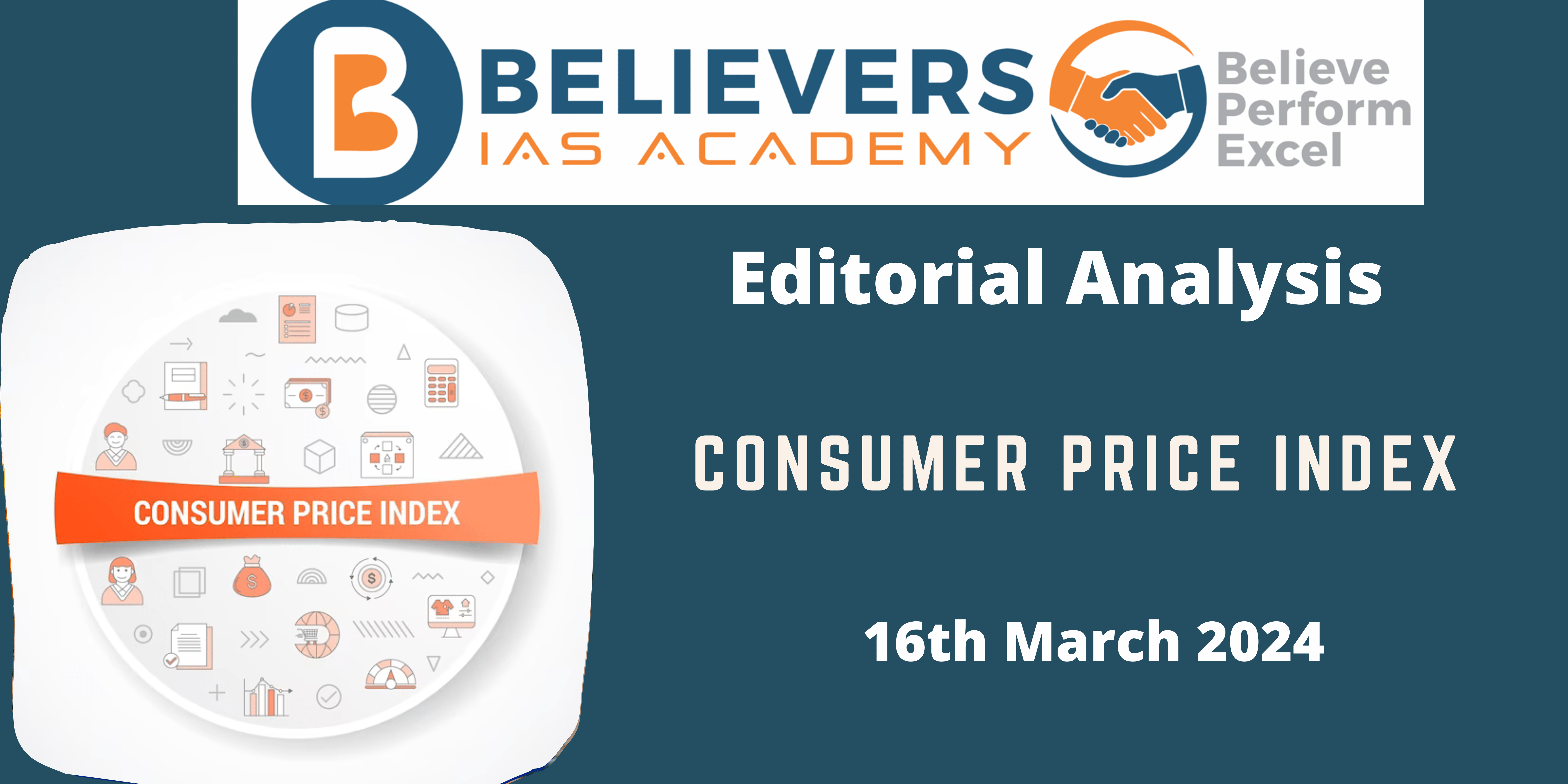Consumer Price Index
Context:
The latest retail inflation data remains stable at 5.09%. However, food prices especially potatoes, onions, and tomatoes, witness significant inflation by 8.66% that threatens private consumption and economic growth.
Relevance:
GS-03 (Economy)
Mains Question:
Examine the impact of persistently high food inflation on private consumption and economic growth in India. What measures can be taken to address this challenge and foster inclusive development? (250 words)
Dimensions of the Article:
- What is CPI?
- Types of CPI
- Impact of Food Prices on Inflation and Economic Growth
- Supply-Side Challenges and Agricultural Outlook
- Impact on Private Consumption and Economic Growth
- Significance of CPI
What is CPI?
- CPI is a price index that measures the average price of a basket of items over a given period of time.
- It determines the average price paid by customers to merchants.
- The CPI is the most widely used measure of inflation, closely followed by policymakers, financial markets, businesses, and consumers.
- It is divided into 8 categories: education, communication, transportation, recreation, clothes, foods and beverages, housing, and medical care.
- The CPI is published by the National Statistical Office (NSO) under the Ministry of Statistics and Program Implementation on a monthly basis.
- The base year for CPI is set at 2011-2012.
Types of CPI:
There are 4 different types of CPI measured:
- CPI for Industrial Workers (CPI-IW)- compiled by the Labour Bureau
- CPI for Agricultural Laborers (CPI-AL)- compiled by the Labour Bureau
- CPI for Rural Labourer (CPI-RL)- compiled by the Labour Bureau
- CPI (Urban/Rural/Combined)- compiled by the NSO
- Of these, the first three are compiled in the Ministry of Labour and Employment.
- CPI (Urban/Rural/Combined) is compiled in the Ministry of Statistics and Programme Implementation.
Impact of Food Prices on Inflation and Economic Growth:
- While the headline Consumer Price Index (CPI) remains relatively stable, the acceleration in food price inflation to 8.66% underscores the significant burden on household budgets.
- Of particular concern are the soaring prices of vegetables, including potatoes, onions, and tomatoes, which are essential staples for most households.
- The inability of supply side measures, such as the ban on onion exports, to mitigate these price increases exacerbates the situation.
Supply-Side Challenges and Agricultural Outlook:
- Despite government interventions, including export bans and other measures to boost domestic production, food prices continue to surge.
- The latest estimates from the Ministry of Agriculture and Farmers Welfare indicate a decline in onion and potato production, further fueling concerns about food inflation.
- Additionally, water storage levels in reservoirs across the country are below average, posing risks to summer-sown crops, particularly in regions facing acute water shortages.
Impact on Private Consumption and Economic Growth:
- Persistently high food inflation not only strains household budgets but also dampens private consumption, a key driver of economic growth.
- With private consumption accounting for a significant portion of GDP, elevated food prices pose a threat to inclusive and sustained economic development, particularly in rural areas where the impact of inflation is most acute.
- RBI Deputy Governor Michael Patra’s warning underscores the urgency of addressing inflation to prevent further economic distress, especially as the country approaches elections.
Significance of CPI:
- The Consumer Price Index (CPI) records the price of a wide range of goods and services in a country to keep track of inflation. It can include anything from a loaf of bread to a holiday.
- CPI can be used to index the real value of wages, salaries, and pensions; to regulate prices, and to deflate monetary magnitudes to show changes in real values.
- In the National Accounts, CPI is utilized as a deflator.
- It is also used to calculate Dearness Allowance.
Conclusion:
Addressing food inflation is imperative to ensure equitable and sustainable economic growth. Policymakers must act decisively to tackle supply-side constraints, enhance agricultural productivity, and safeguard private consumption.




